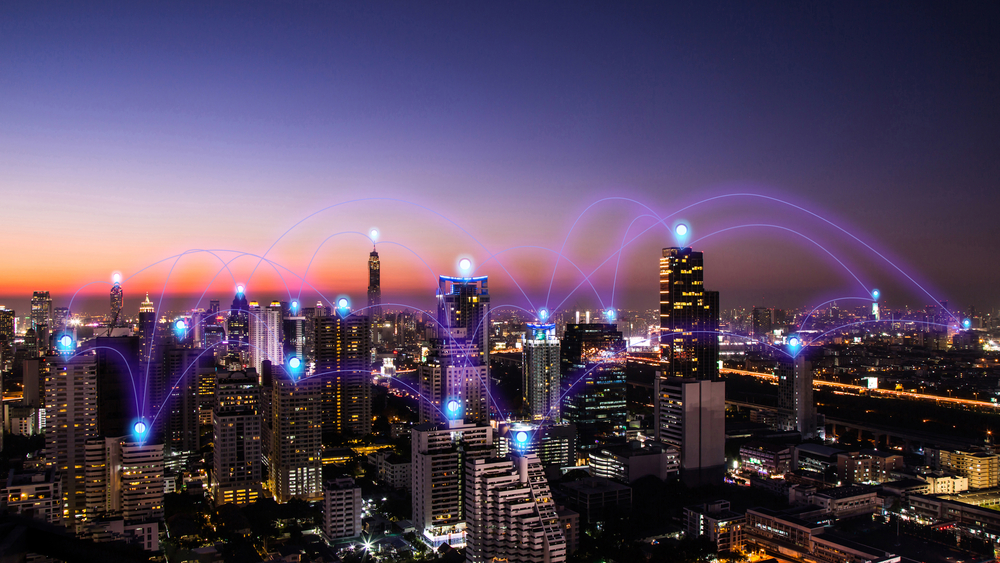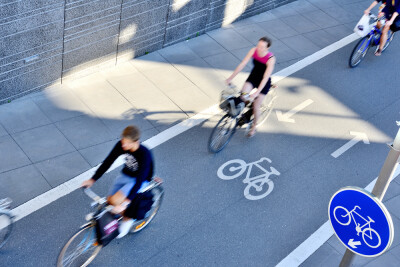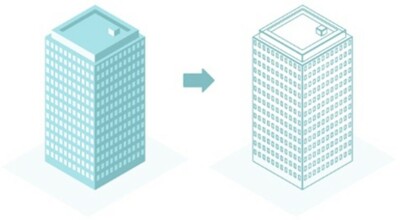by Simon Bailey, CEO, T-Kartor USA
Attracting boots on the ground is make or break for city planners and economic development teams, but in the post-pandemic era, it’s become harder than ever for many municipalities.
Teams need to think carefully about how to make sure areas don’t just include local points of access and amenities for both residents and visitors, but they also need to figure out a way to improve access to and awareness of these things. At the same time, they need to find a balance that benefits businesses, industries and communities alike.
Advancements in wayfinding technology can be key to this puzzle. Traditionally, wayfinding has been compared to a GPS, a simple kiosk, or an alternative method to navigate space. While navigation plays a role in wayfinding’s core makeup, simply getting from point A to point B is far from the entire picture – it has the capability to connect citizens, organizations and communities into a cohesive network. The technology can make a destination more attractive with information on what to do along the way and in the area, including local watering holes, history, recreational opportunities and more.
Wayfinding is about truly immersing data, perspective, and opportunity for individuals, businesses, industries and communities to maximize potential and connection into an easily palatable system – whether it be an app, a network of digital kiosks, an interconnected system of maps and signs or a combination of those solutions.
Creating more opportunities for visitors and residents
For tourists or individuals visiting a new city, wayfinding can be a digital counterpart of the man on the street, the helpful local who can give you the low-down on where to go and how to get there. With wayfinding, this analog concept gets an upgrade with layered insights like what to see along the way to the intended destination.
Wayfinding correlates location and navigation data with local points of interest, facilities, recreation opportunities, dining options, and more. In turn, this draws foot traffic to locations that may otherwise be passed by or completely missed. This can be especially useful for people preparing to visit a new location – instead of spending countless hours researching desperate information online about things to do and places to go, they can receive this information in real time as they travel.
For locals, wayfinding can also offer useful insights. Aside from uncovering hidden gems, it has the potential to create alternative courses of action when local norms are awry. For example, let’s say there’s a major sporting event happening in a city and it’s going to affect traffic. Wayfinding can help provide residents with information about alternative routes to avoid traffic and provide insight into less-crowded areas at that time. This can include not just better traffic routes, but recommendations for walking and even public transportation, such as which bus routes, subway rides or walking paths are available for a given destination (as well as what to do along the way). For example, in New York City, the Metropolitan Transit Authority (MTA) has used wayfinding solutions increase connectivity among the city’s extended public transit network, creating a more seamless experience when exploring the five boroughs.
How businesses benefit
Wayfinding has serious potential to drive foot traffic and commerce. With physical stores grappling with consumer preference for ecommerce, retailers and other businesses need innovative approaches to increase the number of people coming through their doors.
Too often, a host of small businesses are dotted just off the main strip of a city’s downtown – without local knowledge or extensive research, those visiting would never know these locations existed. Coupled with this, when a city is hosting a town event, such as a farmer’s market, wayfinding can ensure those participating are aware of the opportunities that surround them via networks of carefully placed signage or digital maps – spreading economic growth among a variety of businesses that would otherwise be left to the wayside.
By having business data integrated within the wayfinding solution, consumers will have the power to ask simple queries such as “What should I do before the hockey game tonight?” and be given insight into not only an ideal pathway via their preference of travel but be given a host of information about where to shop, dine, and visit.
In Toronto, city officials have worked to improve walkability and encourage more business by establishing a program that integrates technology, physical signage, handheld maps, and digital media to create a cohesive and accessible navigation experience – promoting consistency, inclusivity, sustainability, and seamless transitions through a unified mapping and signage strategy. The result? Toronto’s small businesses and restaurants are seeing more foot traffic.
Businesses and developers can also use wayfinding data to inform decisions about where to put a new store or which apartment buildings can succeed without parking garages, or where the best location for a new theater might be.
Building stronger communities
The deep insights that can be gleaned from wayfinding data also can help build economically healthy communities, strengthen specific sectors and overall, foster a greater sense of interconnectedness.
City planners can use data collected from traffic, businesses, facilities and municipalities to understand the needs of individual portions of a community.
Wayfinding data can also be used to improve public safety, such as in the event of natural disasters, by providing information about things like ideal evacuation routes amid potential road closures and traffic, or insight into where and when to travel during inclement weather. It can also give perspective on where new facilities are needed most, relay the fastest response routes possible given real-time conditions and analyze where additional budget should be placed to deal with emergencies in the future.
For example, after correlating data from these sources, city planners might uncover food deserts in their community – areas in which residents don’t have easy access to a grocery store – and can couple that information with insight into peak foot traffic. Together that info can be used to do things like help encourage grocers to invest in those areas, with consideration of access to public transit.
The Building Healthy Communities (BHC) initiative in New York City is a prime example of this technology in action. The initiative aimed to address health inequities by collaborating with local, public, and private partners to improve community health outcomes with a focus on enhancing opportunities for physical activity, increasing access to nutritious and affordable food, and promoting public safety across 12 neighborhoods in all five boroughs.
This was initially accomplished through creating maps that not only guide residents and visitors but also highlight resources such as parks, community centers and healthy food outlets. This has served as a springboard for broader applications with layered insights, like public health initiatives, urban planning, and community engagement. Furthermore, the BHC maps were optimized for inclusivity and accessibility for all citizens via a multilingual format.
Laying a Technical Foundation for the Future
The main hurdle for creating advanced wayfinding solutions for individuals, businesses and communities to harness is not sourcing the data – it already exists – but rather, the correlation of that data. All of this data is out there; but it’s a matter of bringing it together and harnessing the insights in a way that can be shared with all the various stakeholders.
Compounding the issue, the data sets themselves are simply massive, petabytes upon petabytes of information, and with more coming in every day, human oversight is not possible.
Given the emergence of advanced AI and machine learning, the capability to sort this data is officially possible. That said, AI models, no matter the training, cannot function well in any capacity without this strong data foundation. Once a sufficient pipeline to a trained AI model is accomplished for a given location, we can rely on AI to do the heavy lift of sorting and correlating the fragments for actual use within an app or website – unlocking the immense benefits wayfinding has to offer every party involved.
Finding a Way Forward
Wayfinding technology can benefit all facets and members of communities, from industries to individuals. Data is abundant but bringing it all together helps inform everything from improving public facilities and services, to enabling equitable access to resources, and creating communities that better serve their residents. Businesses, too, stand to gain substantial benefits. That’s the promise of the wayfinding-enabled smart city.
 Simon Bailey is a leader in geospatial intelligence, with over 25 years of experience advancing specialized geospatial products, services, and solutions. As CEO of T-Kartor USA, he has diversified the company’s capabilities to support the National Geospatial-Intelligence Agency (NGA) and other key sectors, solidifying its role in delivering high-quality vector, imagery, and terrain solutions.
Simon Bailey is a leader in geospatial intelligence, with over 25 years of experience advancing specialized geospatial products, services, and solutions. As CEO of T-Kartor USA, he has diversified the company’s capabilities to support the National Geospatial-Intelligence Agency (NGA) and other key sectors, solidifying its role in delivering high-quality vector, imagery, and terrain solutions.
Simon’s career includes impactful roles at Axim Geospatial (formerly Continental Mapping Consultants), Boeing, and Dewberry, where he led GEOINT projects that refined his strategic and leadership skills. A passionate advocate for St. Louis as a geospatial innovation hub, Simon collaborates with local businesses and organizations to develop talent pipelines and partners with educational institutions such as the Taylor Geospatial Institute to support workforce development and innovation.






